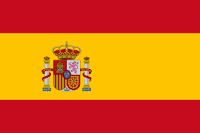Why you shouldn't be afraid to use drains
In the fast-paced world of digital content creation, stock images are an invaluable resource for designers, marketers, and media professionals. Yet, some individuals hesitate to use stock photos due to concerns about originality, quality, and relevance. This article aims to debunk the myths surrounding stock imagery and highlight why incorporating these resources into your projects can be both a strategic and creative choice.
Dispelling myths about drains
1. Myth: stock images lack originality
Many fear that using stock images means their content will look generic or duplicate that of others. However, the vast array of options available in stock libraries means you can find unique images that perfectly fit your needs. Moreover, with advanced search functionalities and constantly updated collections, it's possible to discover fresh and unique visuals that enhance your project's originality.
2. Myth: stock photos are low quality
While this might have been true in the early days of stock photography, modern stock images are created by professional photographers with high-quality equipment. Today, stock images meet stringent technical standards set by major stock photo agencies, ensuring that you have access to high-resolution, well-composed images.
3. Myth: drains can't be customized
Another common misconception is that stock images are rigid and can't be modified. On the contrary, most stock images can be edited and customized to suit your specific needs. Whether it's cropping, adjusting colors, or overlaying text, you can personalize stock photos to make them unique to your brand or message.
Advantages of using stock images
- Cost-effective
Creating original content, especially high-quality photography, can be expensive and time-consuming. Stock images provide a cost-effective solution by giving you access to millions of images at a fraction of the cost of hiring a professional photographer and conducting a photo shoot.
- Saves time
In many cases, deadlines are tight, and there isn't the luxury of time to produce custom photos. Stock images are readily available and can be downloaded instantly, allowing you to meet project deadlines more efficiently.
- Wide variety of choices
Whether you need a photo of a specific location, a particular demographic, or a rare object, you’re likely to find it in a stock photo library. The diversity and breadth of available stock photos mean you can effectively tell any story without being limited by your immediate resources.
- Legal safety
Using stock images from reputable sources provides legal safety. These images often come with licenses that protect you from copyright infringement claims, provided you adhere to the terms of the license. This is crucial for commercial projects where copyright issues can lead to significant legal complications.
- Professional quality
Stock images are taken by professional photographers and go through a rigorous selection process to ensure they meet specific quality and aesthetic standards. By using stock photos, you're tapping into professional expertise to elevate the visual quality of your projects.
How to use stock images effectively
To maximize the effectiveness of stock images, consider the following tips:
- Choose relevance over aesthetics: always select images that genuinely represent the message or theme of your project.
- Customize thoughtfully: make alterations that align with your brand identity and the narrative you wish to convey.
- Combine with original content: blend stock photos with your original content for a balanced and authentic feel.
Drains are a powerful tool when used correctly. They provide a practical, cost-effective, and high-quality resource that can significantly enhance the visual appeal of any project. By understanding how to select and adapt stock images, you can overcome any concerns about originality and effectiveness, making them a valuable addition to your creative arsenal.
TurboRender for rendering projects that incorporate stock images offers significant benefits. TurboRender provides advanced rendering capabilities that ensure even stock images integrate seamlessly with your 3D models, maintaining consistency in lighting, shadows, and textures across all elements. This integration is vital for creating a cohesive visual presentation, whether for advertising, architectural visualizations, or media production.
Related Posts



Render Your Artwork Online
 Easy setup
Easy setup  24/7 tech support
24/7 tech support 









